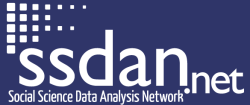Skill
Using software to access and analyze census data
Identifying independent and dependent variables
Forming testable hypotheses using quantitative data
Quantitative writing
Identifying population trends over time
Translating data findings to inform decision making
Using real world data to enhance and support key course concepts
Substance
The fundamental Community Profile you will be preparing should adequately prepare you to understand the very basic workings of population analysis along with its connection with related professional goals and activities that may enhance your career market ability in the coming years.
This activity is used in a Sociology class for undergraduate students. This activity looks at the various factors including social, economic and demographic thatgo into fashioning a community profile.
People are at the root of community profiling: they create the need for planning functions, and they experience the effects - for better or worse - of planning efforts. ""Community Profiling"" is often essential for effective planning. ""Planning"" are synonymous terms; they mean the same. But unless planners know who ""their people"" are and how their characteristics affect - and are affected by - various professional functions, planners cannot fully meet the needs of the population they are profiling. Thus, although it is not a core planning focus, such as land use or transportation, demographic analysis occupies a position of overarching importance in community profiling.
This activity guides students through the different elements that make up a community profile. While different factors are described, there is no specific reference to data manipulation tools or specific websites. This is an opportunity for an instructor to gear the activity toward their class, and offer suggestions for different online tools/sources of information.
